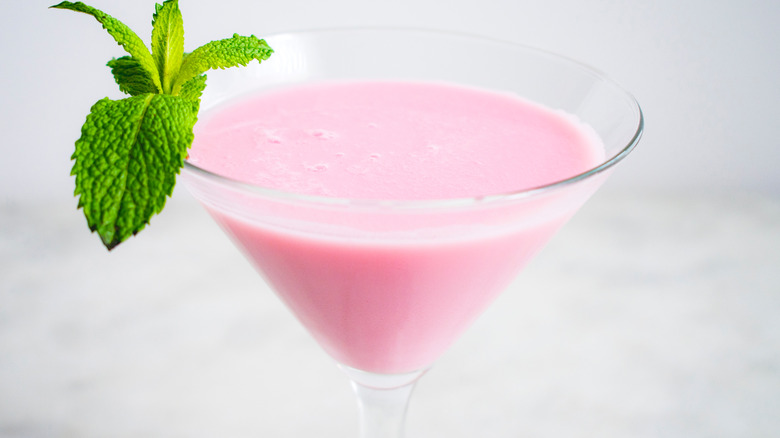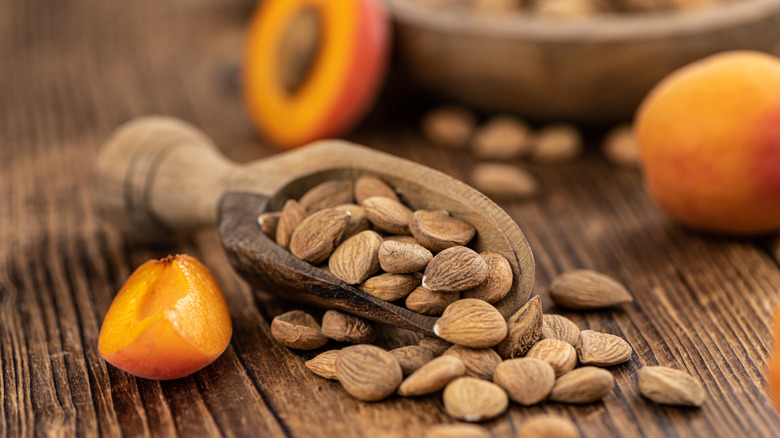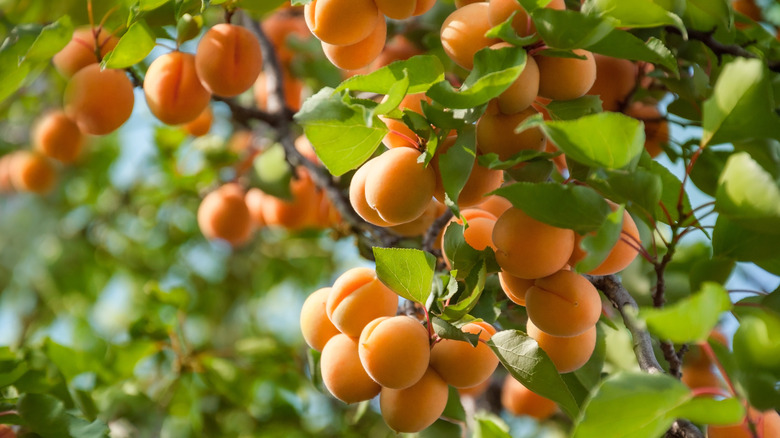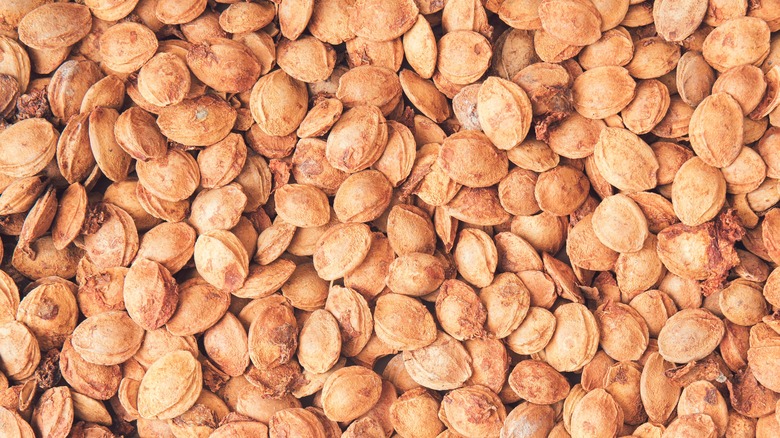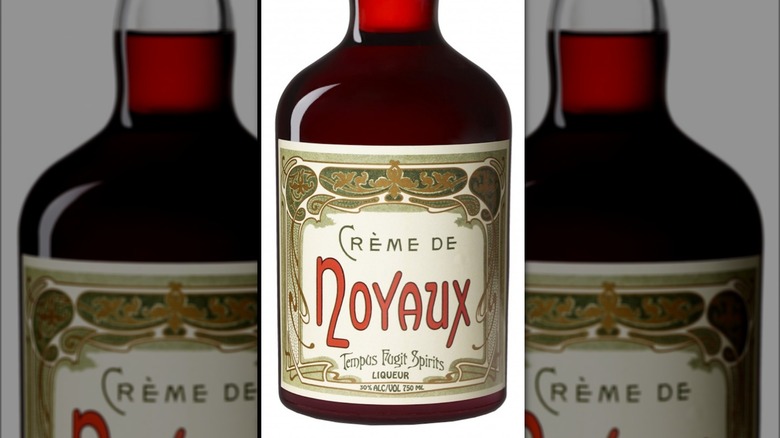What Is The French Liqueur Crème De Noyaux?
If you were to dig around in the liquor cabinet of a French grandmother out in the countryside, you'd likely find a few old-school treasures that have come back into fashion thanks to the cocktail boom of the last couple of decades. Traditional French liqueurs like Suze, Salers, and Lillet are having their moment in the sun, featuring on elevated Manhattan cocktail bar menus and prompting importers to dust off their jackets and get these heritage products out to a new generation.
Nearly lost among all these bar staples, however, is crème de noyaux. This French liqueur is made from distilling the kernels of apricots, peaches, and/or cherries, and "noyaux" is the French word for these hard-to-get kernels, which are kept hidden inside the pits of stone fruit.
But what exactly is this mysterious liqueur, and why would anyone want to make a drink out of cherry pits anyway?
What does crème de noyaux taste like?
Flavored by the almond-like pits of stone fruit, crème de noyaux has a marzipan-like flavor similar in taste to amaretto. In fact, the Italian liqueur amaretto is made in the same way as crème de noyaux, using the kernels of stone fruit so it can — like amaretto — be served as a digestif. The distiller Tempus Fugit describes its crème de noyaux as offering "a complex 'marzipan' note with sweet cherry undercurrent of aroma and flavor with a slight touch of balancing bitterness on the finish."
The crème in its name has nothing to do with cream liqueurs such as Bailey's. Instead, like crème de menthe, crème de cassis, or crème de banane, the name refers to flavored liqueurs with a high sugar content, which gives them a syrupy texture and velvety mouthfeel that plays well in cocktails. The liqueur is high in sugar and low in alcohol, with an ABV of about 30%.
What is the history of this drink?
Crème de noyaux originated in France in the 19th century, but as with many local distilling practices that mainly took place in rural areas, overseen by home distillers, not much is known about who first produced it. But the timing isn't so surprising if you consider that amaretto, which is also made from stone fruit kernels, was first sold commercially in 1851 in nearby Italy. While amaretto is the better known of the two, crème de noyaux was enjoyed locally for decades, likely in the Provence, Roussillon, and Rhone Valley regions where apricots are plentiful.
There are very few liquor companies that still produce crème de noyaux, including the Dutch company Bols and the American company Hiram Walker. Another American spirits company, Tempus Fugit, is credited with bringing the 19th-century liqueur back into the commercial world with its 2013 release of the product as part of its commitment to resurrecting pre-Prohibition-era liqueurs and cocktails.
How do you make it?
While a bottle of crème de noyaux may be hard to come by, it can be made at home if you're willing to put in the effort, and it's a great exercise in snout to tail (or, in this case, stem to pit) no-waste cooking.
The first step is extracting apricot kernels, which are the seeds of the apricot tree and can only be released by cracking open the pit of an apricot. Though the seeds look nearly identical to almonds, they are not meant to be eaten raw, as they can cause cyanide poisoning, per the Food Safety Authority of Ireland.
It takes a lot of effort to extract these kernels. Ideally, you should allow the pits to dry until they become easier to crack — or even put them in a dehydrator — before pounding them with a hammer.
Noyaux kernels are then steeped in alcohol — such as rum — for several months until all of their flavor is extracted, then finally strained. The correct ratio is approximately 2 cups of alcohol to 30 apricot kernels.
Commercial crème de noyaux liqueurs often achieve their attractive bright red color from added cochineal, a crimson pigment extracted from insects.
How do you use crème de noyaux?
Though cocktails with crème de noyaux have long fallen out of fashion, there are a few remaining standards. The Pink Squirrel, made from crème de noyaux, crème de cacao, and cream, is nutty, chocolatey, and rich, with a bubblegum pink color. The Old Etonian takes a different tack, mixing dry gin with crème de noyaux, Lillet Blanc, and orange bitters for a sweet take on a martini. Another dry gin-based cocktail is the Jockey Club, which uses gin, crème de noyaux, lemon juice, simple syrup, Angostura bitters, and orange bitters to create something sweet and sour with an almond finish.
If you are having trouble getting ahold of a bottle, crème de noyaux can be easily substituted with 1 part pomegranate juice and 3 parts amaretto.
Crème de noyaux can also be used in desserts, with a small amount going a long way to flavor custards or ice cream.
